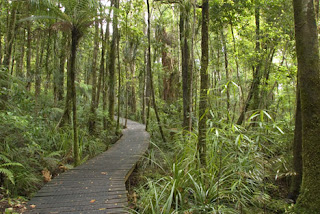This week there was plenty of dissecting and learning out of it. First off, I learned how to use many tools that are used in the process of dissecting. I also learned that all specimens have same organs in a way but have them in different locations in varying sizes making them unique. Dissecting a cray fish, made me realize that the shell isn't as hard as I expected it to be.
cecilias blog
Thursday, May 5, 2011
blog #12
Should we be using pesticides? Why or why not? What are the possible consequences?
Farmers or agriculture people should and should not use pesticides having both good and bad consequences. Having pesticides in use may mean that the plants have less pests and can continue their growth and reproduction. However, this can damage the crop too because they don't have the same old quality it did before and may mean that companies that consume these crops may not want to continue taking in these "fake" production. If these pesticides aren't used the plants can keep original and may or may not be successful. This can also have a down side because this means the plants can catch fungi and not be able to grow as desired.
blog #11
Get a picture of alternation of generations put it in your blog and explain how it relates to plants.
Alterations in generations relates to both humans and plant because they can have same ancestors yet they look completely different from what the ancestor has looked as. They also have similar genes but different traits,which make them diverse from one another. Humans as well as plants pass down traits and characteristics that the offspring may have in the long run. They both require eggs to reproduce and go through wither the process of meiosis or mitosis.
Thursday, April 14, 2011
blog#10
Why is dissection an important part of a biology curriculum? Which animals and/or plants should be included in biological studies?
Dissection is important to the biology curriculum because it gives a better understanding in the standards that are being taught during the school year. Its also good the experiment with different species and find out what they are composed of and to compare the species with other animals being dissected as well. the picture above is an example of how dissecting can help us view and observe how this type of species functions.
Dissection is important to the biology curriculum because it gives a better understanding in the standards that are being taught during the school year. Its also good the experiment with different species and find out what they are composed of and to compare the species with other animals being dissected as well. the picture above is an example of how dissecting can help us view and observe how this type of species functions.
Thursday, March 24, 2011
blog#8
Your choice talk about something you learned or ask a question about something that is confusing you.
In this chapter I learned that all species have different types of skulls and they differentiate on the animals. Having the skull measured and all its features being observed, i learned that the skulls all have the same features except they are located in different parts of the actual skull. For example, the jaw in modern human skulls is shaped more like "U" than the other kinds of skulls having the shape of a "V".
In this chapter I learned that all species have different types of skulls and they differentiate on the animals. Having the skull measured and all its features being observed, i learned that the skulls all have the same features except they are located in different parts of the actual skull. For example, the jaw in modern human skulls is shaped more like "U" than the other kinds of skulls having the shape of a "V".
Thursday, March 17, 2011
blog #7
Compare and contrast two biomes describe them in detail include pictures of plants and animals you are liklely to see
The Aquatic biome takes up the largest part of the biosphere that covers nearly 75% of earth. Without water, most life forms wouldn't be able to survive. There are different animal species in this biome, such as amphibians, reptiles, algae, green plants, snails clams, aquatic plants, fish crustaceans, etc. The Rainforest Biome, has more kinds of trees than any other area in the world, but cover less than ^ percent of Earth's surface. the animals that can be seen there are reptiles, fish, birds, mammals and insects.
Thursday, March 10, 2011
blog#6
Blog #6 Which level of a food pyramid is the most important? Support your answer
The most important food level in the pyramid are the fats, oils, salt and sweets. They are the basic needs for the human body. This helps keep a balanced and healthy diet. However, having excessive amounts of fats and oils can lead to an unhealthy and possibly a diabetic life.
The most important food level in the pyramid are the fats, oils, salt and sweets. They are the basic needs for the human body. This helps keep a balanced and healthy diet. However, having excessive amounts of fats and oils can lead to an unhealthy and possibly a diabetic life.
Subscribe to:
Comments (Atom)








